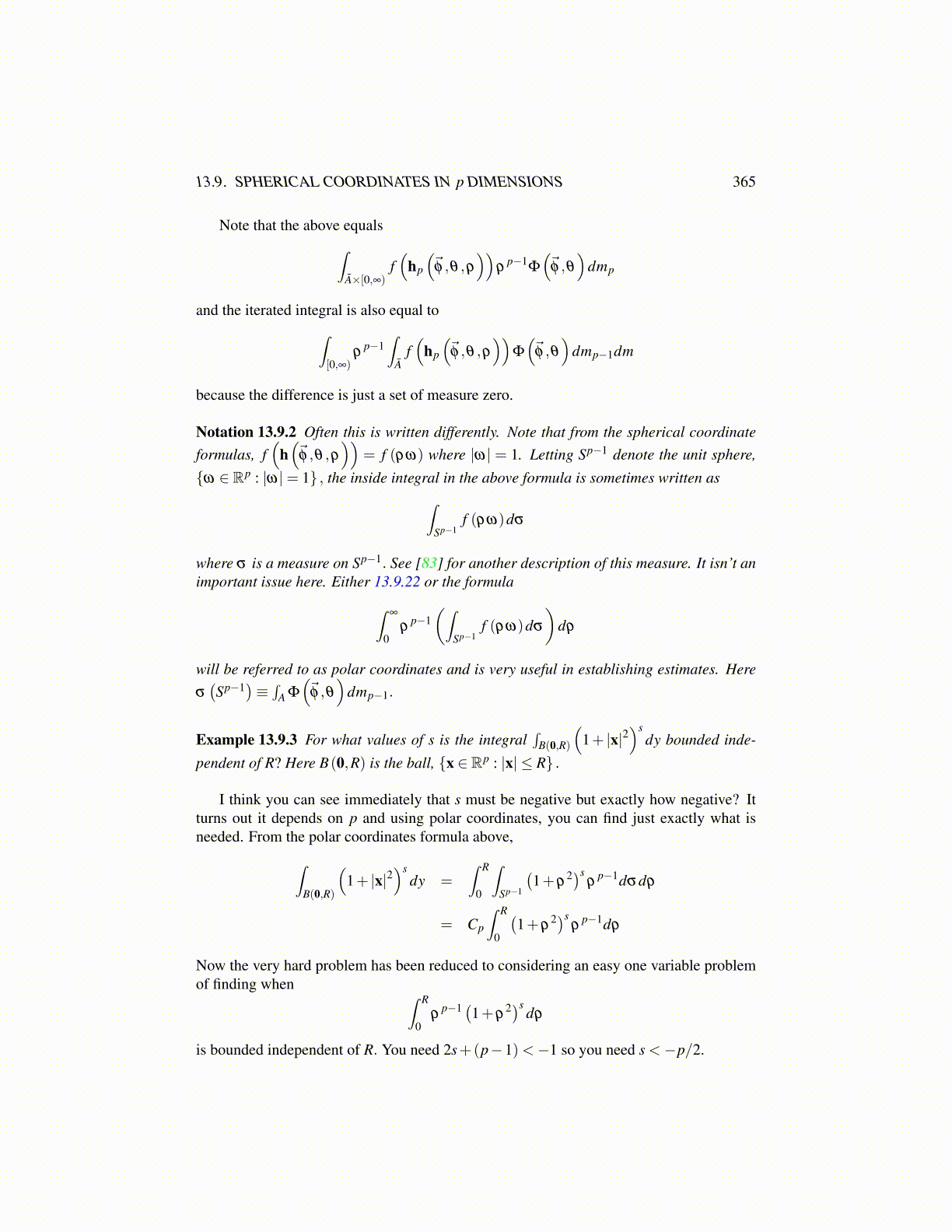
13.9. SPHERICAL COORDINATES IN p DIMENSIONS 365
Note that the above equals∫Ā×[0,∞)
f(
hp
(⃗φ ,θ ,ρ
))ρ
p−1Φ
(⃗φ ,θ
)dmp
and the iterated integral is also equal to∫[0,∞)
ρp−1
∫Ā
f(
hp
(⃗φ ,θ ,ρ
))Φ
(⃗φ ,θ
)dmp−1dm
because the difference is just a set of measure zero.
Notation 13.9.2 Often this is written differently. Note that from the spherical coordinateformulas, f
(h(⃗
φ ,θ ,ρ))
= f (ρω) where |ω| = 1. Letting Sp−1 denote the unit sphere,{ω ∈ Rp : |ω|= 1} , the inside integral in the above formula is sometimes written as∫
Sp−1f (ρω)dσ
where σ is a measure on Sp−1. See [83] for another description of this measure. It isn’t animportant issue here. Either 13.9.22 or the formula∫
∞
0ρ
p−1(∫
Sp−1f (ρω)dσ
)dρ
will be referred to as polar coordinates and is very useful in establishing estimates. Hereσ(Sp−1
)≡∫
A Φ
(⃗φ ,θ
)dmp−1.
Example 13.9.3 For what values of s is the integral∫
B(0,R)
(1+ |x|2
)sdy bounded inde-
pendent of R? Here B(0,R) is the ball, {x ∈ Rp : |x| ≤ R} .
I think you can see immediately that s must be negative but exactly how negative? Itturns out it depends on p and using polar coordinates, you can find just exactly what isneeded. From the polar coordinates formula above,∫
B(0,R)
(1+ |x|2
)sdy =
∫ R
0
∫Sp−1
(1+ρ
2)sρ
p−1dσdρ
= Cp
∫ R
0
(1+ρ
2)sρ
p−1dρ
Now the very hard problem has been reduced to considering an easy one variable problemof finding when ∫ R
0ρ
p−1 (1+ρ2)s
dρ
is bounded independent of R. You need 2s+(p−1)<−1 so you need s <−p/2.